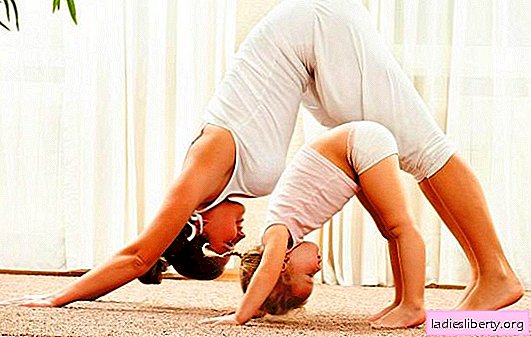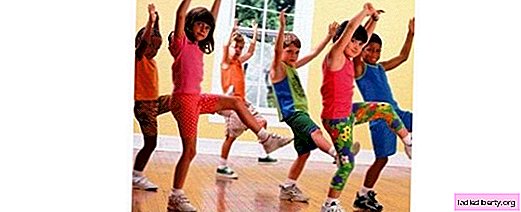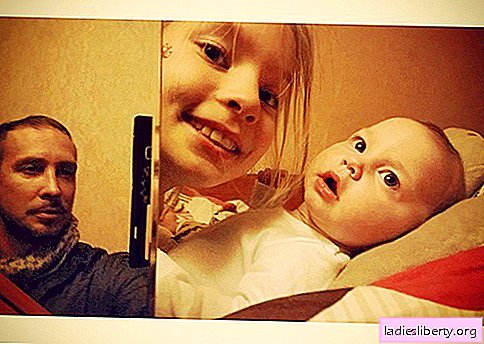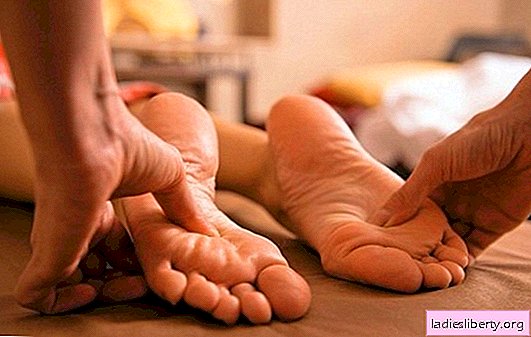
Every child needs a harmonious development, and physical preparation is an important stage in the development of the baby.
In kindergarten, workouts for children are carried out with enviable constancy, and even in elementary school they do not forget about it: teachers periodically interrupt classes so that children can do a couple of simple exercises.
Warm up for children. Children's warm-up for little "energizers" at home
All kids just sparkle with energy. They constantly want to run, jump, dance. That is why sedentary activities - drawing, reading, modeling - they do not give much pleasure. But if the monotonous activities in which you have to sit, alternate with a fun warm-up, the little ones will behave much more calmly, they will be much more diligent.
To make the warm-up for little girls and boys more fun, it is better that it be accompanied by funny poems or rhythmic music. Quite by the way, there will be verses like “Two funny sheep”, “White snowflakes” and the like. We repeat the warm-ups just a few times, adults will easily remember the text of the poems, and kids will remember all the movements that will need to be done for one or another phrase. There is nothing complicated: everything that the baby should portray is spelled out in the text of the verse.
Conducting any warm-up completely depends on the imagination of the parents. If the kid is fed up with the same actions, you can change the speech. And the child will again with interest carry out all the actions that his parents offer him

And adults need to try so that the text of rhymes or speeches makes the little one wave their hands, swirl, clap their hands and jump a little, because it is very important that the baby crinkle and actively move.
Types of workouts for children. Children's finger workout
This warm-up option is suitable for those children who learn to write. A warm-up for hands must be present both during homework and during school lessons.

It can be a familiar to everyone from childhood speech about tired fingers, which need to be given some rest, there may be other, more modern ones.
Simultaneously with the rest, the baby can develop a fantasy: you can offer the child to use his palms to depict dogs and goats, bugs and spiders. All that is needed is for him to simply change the position of his hands, or, better yet, alternately clench and unclench his fists. Only one or two minutes of such a warm-up will be enough and that’s all - you can return to the table for a writing lesson.
Warm up for children. Children's dance workout
Such a warm-up will be very useful if the kid does not want to engage in the rhythm of poetry. In this case, parents can offer him, as an option, to warm up to their favorite music.
Exercises can be any, simple, which is interesting for the child to perform. There is only one rule: the baby’s body should be involved from top to bottom, that is, first the neck, then the shoulder girdle, waist and legs.
Exemplary exercises that have become classics of the genre, but which nevertheless bring benefit to the children, are as follows:
1. The legs of the child shoulder width apart, the handle on the waist. The head alternately tilts left, right, forward, backward.
2. The child’s head, as it were, draws a semicircle from the left shoulder to the right and from the right to the left.
3. The legs of the baby shoulder width apart, arms parallel to the floor. "Draw" circles with your hands, first forward, then back. You can depict a mill: one hand in a circle down, the second in a circle down. One hand in a circle up, the second hand in a circle up.
4. Legs shoulder width apart, handles at the waist. The child makes the body turns to the right and left.
5. The same starting position. Tilts alternately left and right, forward and backward.
6. The starting position is still the same. Alternately raise the legs bent at the knee.
7. From the same starting position, perform swings with straight legs: right foot to the right, left foot to the left.
8. The last, final exercise. Legs shoulder-width apart, arms raised above head. Take a breath We lower our hands, leaning forward with our whole body. Exhale. So several times until breathing returns to normal.
Now back to the music. One of the most rhythmic and beloved kids songs is "Aram-deputy-deputy". Even children's animators use it in their show programs, inventing funny movements for her. Another song suitable for children’s warm-up is the first few charts of the Macarena charts that took a couple of decades ago. She has a simple motive and very light movements that are easy for the baby to remember.
When choosing a song for a child, the main thing is to pay attention to an incendiary motive and a set of movements, which will be easy for a child to repeat and remember.
Dance warm-ups will be especially useful for children who have a musical ear, especially if this kid wants to attend a dance section. At home, he will be able to train his hearing and get plastic, which will help him master the dance movements in the section.
Warm up for children. The basic rules of children's workout
Many parents experience certain difficulties in organizing their baby and getting him to correctly perform each movement. It turns out that in order for the children's warm-up to be a pleasant and interesting occupation, rather than a sad obligation, it is enough to remember a few simple rules:
1. There should be interest in the child, because the home workout should be fundamentally different from the school physical education lesson. At home, this is a fun game. You can turn on music, learn poems or songs, you can even come up with your own words that will denote this or that action. A good example is a dance workout that the child will do to songs or music.
2. There should be voluntariness, because a children's warm-up should give rise to only good, pleasant emotions in a kid. Then he will want to repeat it again and again. If the baby is not in the mood or does not feel well, do not force him or try to persuade. To begin with, it will be more correct to distract the baby from unpleasant emotions for him, and only then try to transfer the game into an occupation.
3. Exercise time should be limited. This is primarily true for those families where the child is still very small. The first days will be enough just five minutes. Gradually, you can increase the time and number of exercises.
4. It is useful to come up with your own traditions and rules. For the peanut, such exercises are perceived as a game, rather than something serious. Mom can come up with songs that are only for her child. They will have certain words that mean some kind of movement, exercise, or the beginning and end of a workout. You can choose only your own music, under which the movements of the dance or exercise will be performed.
No matter what the parents come up with, the main thing is that each warm-up should bring positive emotions and joy to the baby. It should be interesting to him. Older kids already understand the need for such exercises, and kids 3-5 years old do not yet realize the seriousness of it, so it’s easier to lure them with words, music or plot.
Warm up for children. We include in the children's warm-up a set of basic movements
There is a certain set of movements, which should be the backbone of the children's workout. It can be beaten each time differently. You can select different subjects for classes, come up with a new fun dance.

You can add some additional movements, but there must be the following:
- walking on the inner and outer sides of the foot in turn;
- walking on the heels and toes;
- walking squatting;
- when walking, raise the knees high;
- standing on all fours, bend the back (like a cat);
- jumping from one side to another;
- sit in a pose called "butterfly" (the feet are located together and the knees apart) and try to press the knees to the floor;
- again the pose "butterfly" and try to lean forward several times;
- lie on the back and take turns raising the legs;
- lie on the back and pull the socks to the left and right;
- lie on the back and raise and lower legs both simultaneously.
Warm up for children. Do not forget about the children's workout for the eyes
Such a warm-up will be useful to schoolchildren, especially elementary grades, because the modern educational process is quite laborious. That's why the organs of vision are under a lot of stress. A warm-up for children's eyes is necessary for a slight correction of vision and to prevent its deterioration. You can start such classes from Monday, using fun rhymes for simple exercises.
Monday. The child raises and lowers his eyes, leaving his head motionless. For the baby, you can offer to raise your eyes and look at the sun, smile at him, and then look at the green grass.
Tuesday. The rotation of the eyes first to the right, and then to the left. The baby's head remains motionless.
Wednesday. You can offer to play hide and seek: ask the child to first close his eyes tightly, and then open them wide.
Thursday. The kid looks into the distance at any objects that are at a distance of at least 30 centimeters. Then look at the tip of your finger. Then lower the finger. This allows you to strengthen the muscles of the eye and improve its coordination.
Friday. Alternately raise the eyes up, lower them down, then look left and right. This will allow the child to improve complex eye movements.
Saturday. Ask the child to take turns looking at the corners in the room: first to the upper right, lower left, upper left, lower right.
Sunday. On the last day of the week, it is best to carry out relaxation exercises: the eyelids should be closed and massage with your fingers.
So, we figured out that thanks to the warm-up for children, it is possible to use important functional systems in their bodies, strengthen different muscle groups and form new skills. The main advantage of children's warm-ups is the high efficiency of exercises with not very large expenditures of time. And if these exercises are combined into an exciting game, then the kids will perform them with great desire and interest.











